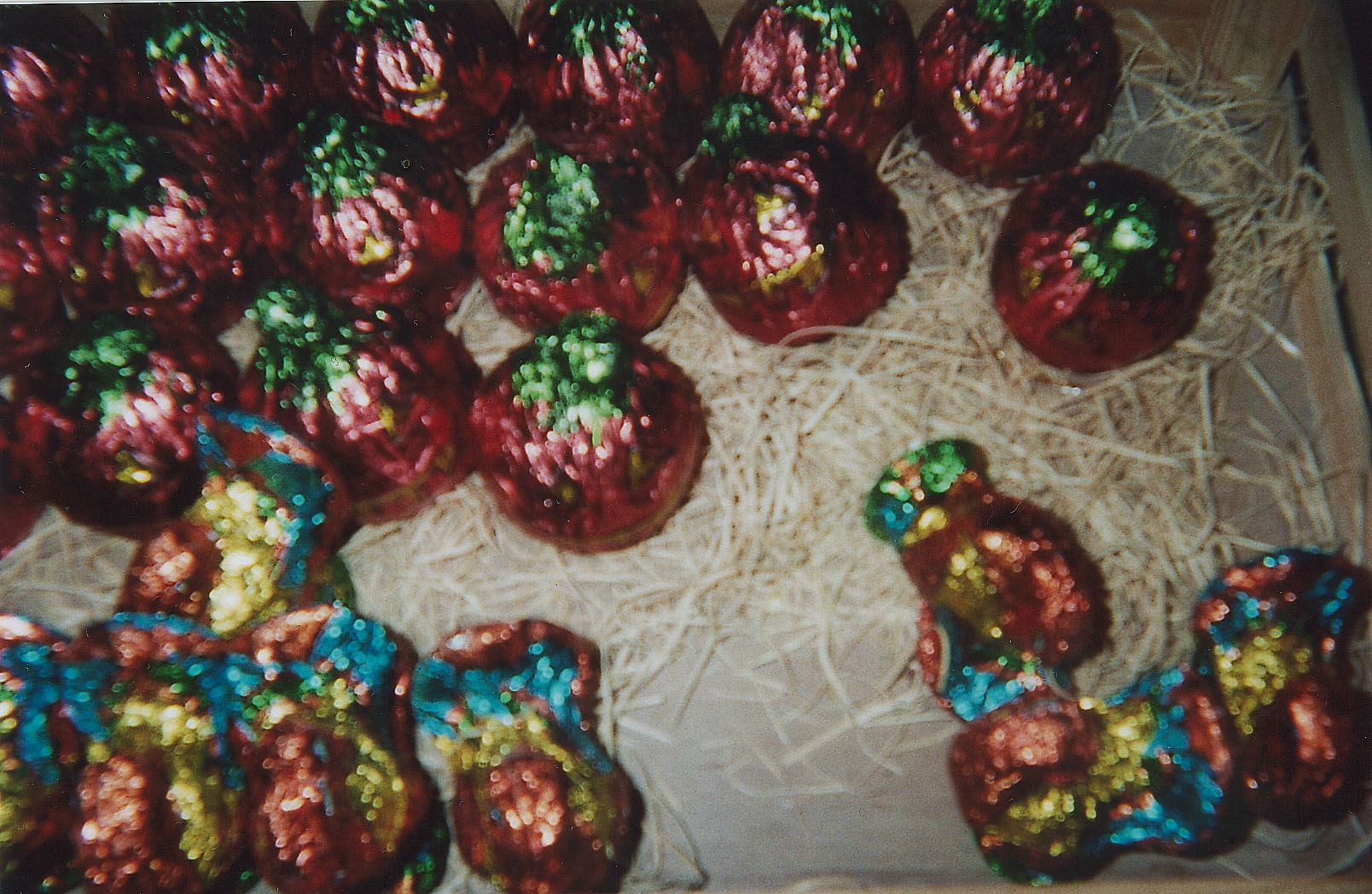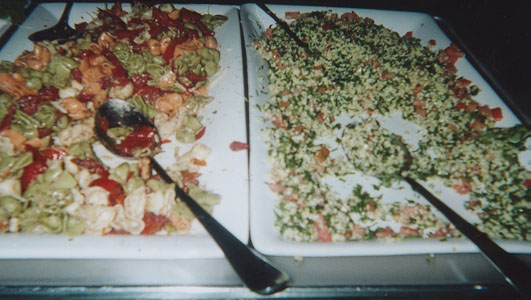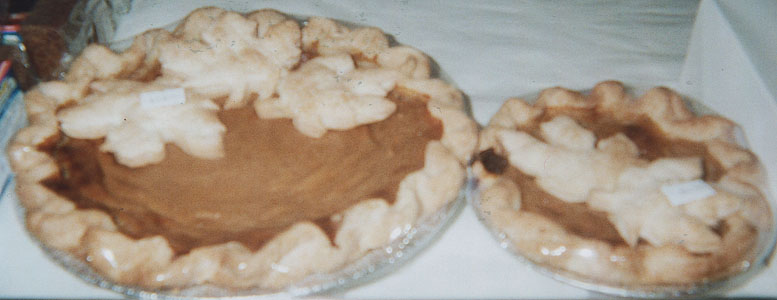 If you stay too long eating this pesto pasta, you won't be able to eat anything else!
If you stay too long eating this pesto pasta, you won't be able to eat anything else! Point of View
What are the differences and similarities between narrative voice in fiction and sequencing in screenwriting? The camera decides who it likes and dislikes depending on actors but does the screenwriter control any of this?
In fiction, a story can be told in the first person, rarely the second person but it happens in some chapters of Soul Mountain by Gao Xi Jiang, third person limited, over the eyes of the main character, or third person omniscient, mimicking God, so to speak. Western readers are used to having one narrator for an entire work and often confuse the author with the narrator, while other cultures, particularly Islamic and Arabic ones, feel comfortable with multiple narrators, whose combined visions, present a rich tapestry of story. American writers often think their narrators are "objective," like scientists, allowing the story to speak for itself, but every time a story is told, there is always a point of view, even if it takes a while to decipher it.
Most of the innovative structure in timespace center on theme more than CDQ. I have explored everything but interactivity, chance and game theory. Most of the recommendations in this book assume that the writer is making choices and designing paradigms. But as with music and choreography, it is also possible to design art by the throw of the dice, so to speak, or games that engage interaction between reader and writer. These techniques surprise the writer as much as the reader, and are good ways to overcome writer's block.
 If you stay too long eating this pesto pasta, you won't be able to eat anything else!
If you stay too long eating this pesto pasta, you won't be able to eat anything else!
TIME and REALITY
The oral storyteller weaves his yarn about events that happened in the past in front of an audience, enchanting them with elements of fantasy injected into the people and places with which they are familiar, as in Arabian Nights.
The play takes place in the present even though the characters may talk about the past or future. Novels do all kinds of things with time-think of the complexity of French grammar. There is a difference between the past imperfect and the past simple, the repetition of a habit or an event worth noting. Some novelists write in the present, the past imperfect, the past simple, the conditional or subjunctive in lyric modes.
Television adheres to a meticulous, repetitive schedule of present tense narrative. Film uses present tense with flashback narrative and while it plays out in the present, can rewind or fast forward the story as in experimental films. Both TV and film can use recursive, flashback, tandem or tandem competitive as well as linear narrative. The Internet destroys time-it doesn't matter. The user enjoys or creates the story any time she wants.
For example, Alan Lightman's Einstein's Dreams describes so many ways
of living time as if it were one day, going backwards, rushing to Apocalypse, turned into space, or torn between biological and mechanical time.
The smaller the space of the medium, the wider the world of it story-books and computers.Some desserts look better wrapped, or from a distance. A close-up can make something unappetizing at times, a bit like multi-colored vomit.. 

 If you begin with seafood salad, end with fruit salad.
If you begin with seafood salad, end with fruit salad. Varying the scene order
Lyrical versus Percussive
 Do you really want to eat all that pasta before the tabouli, or vice versa?
Do you really want to eat all that pasta before the tabouli, or vice versa?While dramatic structure relates to central dramatic question, narrative structure relates to theme, the author's attitude towards the material. Narrative structure is described by the voice of the narrator-omniscient, limited, first or third person, non-human, personified or human, distance from the story; the sequence of events in time-linear, recursive or other kinds of flashback, superimposed time or tandem competitive, past imperfect or repetition, out of time in some kinds of expository, lyrical or descriptive writing which may include the emotional subjunctive, conditional or future time expressed in the possibilities of branching narratives and indeterminate endings; and a spatial existence that can be real, imaginary, in the head, superimposed space or disembodied.
What are the unique qualities of print, oral communication, internet/small screen, or movies/big screen that create certain kinds of narrative and dramatic structures? Dramatic structures are the same in all media but narrative structures differ. The Internet is most conducive to branching narratives, tandem competitive time and superimposed space. How do written and oral communication differ? Written communication lends itself to the invisible, omniscient narrator but oral communication insists on the real character of the narrator as in Arabian Nights. Film has glorified the flashback and recursive narrative but branching narratives with indeterminate future are not popular. Run Lola Run is more of a rewind of three stories from beginning to end, rather than a future oriented piece. Film can speed up or slow down but it lives in the immediate present even when flashing back. Stage playsRECURSIVE: The present is relatively static and the past is used to solve a problem in the present, even if that is to recapture lost time as in Proust, or to stop the plague in Ancient Greece in Oedipus Rex. While the climax of the play occurs when Oedipus plucks out his eyes, the present action up until then has been mainly conversation about dramatic events in the past. When the past is plucked, it is not replayed in a realistic, linear fashion, but filtered through the lens of the present. At the end the digs into the past cause the present to change somewhat. This is often told in first person or through the eyes of a main character. Flashback films and written memoirs, static plays like Oedipus are its forms. How do these forms differ and how do they translate into each other? Recursive is the basis of psychoanalysis where patient and psychiatrist sit in a static present using events in the past to trigger feelings to be catharsized and analyzed in order to solve problems for better action in the future. Oedipus Rex only won second prize in the playwriting competition in Ancient Greece, so some feel this kind of storytelling isn't dramatic enough. This is the basis of reflection, of the thinking we do in memoirs or at the end of the day. But it doesn't work well with multiple narrators or a huge sociological vision or a lot of action. It is for sensory recall, problem solving.
Thwarted dream, case history, life changing event. Ivan Ilyich. Rewind.
TANDEM COMPETITIVE: Stories can be in tandem without competing-sharing the same space or the same time or the same characters with some different factor. In my novel, similar characters appear in different space. It seems as if they are in the same time because they occupy the same novel, but one is in the active, impressionistic, dreamlike present and one the past imperfect, one in the eternal present of dreams and one in a specific period in society and history. They compete when they rival each other for truth from the Reader's POV. There must be a reason why stories are told in tandem. In real life, two versions of the same story are constantly competing in our minds, a phenomenon which reaches its extreme state in bipolar illness where the same state of events can be interpreted as depressing or uplifting, depending on the mood, or actions are constructed to reap those same results, depending on the mood. In other words, something exists before the story because the story is simply how specific people engage in certain events in a specific time and place. Therefore, their objectives, moods, abilities and proclivities as well as social conditions are set before the story occurs. Hence different moods and objectives can actually create somewhat different stories. We sometimes see scenes on split screen or split stage or alternating chapters of narrators in a novel. This narrative style is particularly disturbing as we don't know what kind of truth to accept and our mood is constantly jarred by the constant switches. Yet this is exactly what happens in psychosis.
LINEAR: Linear is the most common kind of storytelling in which a beginning, middle and end follows similar linearity in time and space. However, in dreams, linear storytelling does not necessarily have a cause-effect as is commonly understood. In Hollywood screenplays, script doctors are brought in to make sure there is a causal relationship to the scenes. Usually linear storytelling is told by one narrator, whether first, third or the camera, but in pass the ball linear narrative, multiple narrators carry the same story in sequence, the way storytellers passed tales through the desert from oasis to oasis through different caravans. They tried hard to be true to the story, but each storyteller obviously colored the tale based on his perceptions and values. In my second novel I chose 18 nonhuman narrators or human extensions, as McLuhan would say, to carry the story. This is a technique still used today by writers like Naguib Mahfouz, Yusuf al Qa'id in War in the Land of Egypt and Orhan Pamuk in My Name is Red. You can have multiple narrators without a linear story as in Akhenaten and some of Faulkner's work, but pass the ball linear is like the game broken telephone where narrators try to pace their addition to the story embedded in sequence within its entire history. This gives tremendous importance to the story but protects it from the fallacies of omniscient narrators like those of Tolstoi. Pass the ball linear doesn't lend itself that well to film although it is possible it could be done-something as disciplined as War in the Land of Egypt might work well. My second novel would be hard to film and keep all those narrators. Some things are too difficult to visualize in this narrative. Films and plays take place in a linear fashion but they can refer to events that occur out of sequence in time.
CONGLOMERATE:It seems that in conglomerate narrative, there must be an active throughline in the present that covers winter to winter -one year which is the surface of the rock. Then the layers are the back stories. How does this differ from recursive narrative? Recursive features the past to solve a problem in the present like Oedipus Rex; while conglomerate has a hard active linear present that covers layers of secrets, lies, and history in the past. Conglomerate is neither tandem nor competitive, nor does it deal with the future. The past is not imperfect past but singular events that influence the present. Is conglomerate the right word? The idea is that there is a superficial story with deeper stories underneath, some of which may be too disgusting, disappointing, depressing or disarming for the Reader or Viewer to stomach. For example, soap operas skim the surface of narrative, idealizing characters and romanticizing situations by avoiding depressing details. How many people lie dying with perfect hair and make-up? In a hypertext story there can be the top layer of narrative for everyone, then layers underneath which symbolize gossip, pettiness, uncomfortable facts, and finally those things that are usually censored. This would be one way to deal with Internet censorship. This is different from the usual hypertext story of branching narratives where different future outcomes are envisioned.
Repetitive structures aren't the same as descriptive films. Groundhog Day and Run Lola Run repeat. There are some changes with the different versions.
Parallel structures like The Hours are not sub-plots. The danger here is to be choppy if the sequencing isn't right and there aren't enough similarities or differences between the stories. It is like comparison and contrast in literary criticism. Choppy, flowing, choppy, flowing. But if the narrators argue, if the stories bleed into each other for a reason, it gives the whole script more depth. The Matrix has a number of parallel structures.
Instead of repetition, it might be good to spiral the action so that when characters revisit the scene they attack the problem in a different way. Sometimes the event is seen in flashback. Perhaps I could use the rape scene in I as my spiral.
The Unraveling-mystery structure is used with whodunits. The skill involves laying clues throughout the film and then learning the truth in the third act.
In Memento the whole film is a flashback so that it is a reverse structure. The trick is to keep the audience asking a central dramatic question. There must always be a puzzle for the audience to solve. In a circular structure there must still be linear parts. Pulp fiction has a looping structure of beginning-end-middle and more.
Non-linear stories require more structure than usual so that don't break up, dissolve or fly into different directions.
Good drama combusts time. Even with different time periods like The Hours, it is possible to carry objects like the flowers and book from one setting to the next.
It mustn't feel like a string of stories pieced together from disparate places, similar to a bad research paper without a central thesis.
A good sequencing technique is to imply an action in a that is carried out or frustrated or somehow commented upon in b. Or cut from an object in one to a similar one in the other.
Or the setup of a joke is one scene and the punchline in the next.
Just as dance routines can be choppy if the movements aren't connected, scenes can be choppy if they have no relationship to each other.
Aural Links
Visual Links
Keefer's Advanced Sequencing
SEQUENCING
After you have determined your main characters' objectives and spines, plotted the arc(s) of your dramatic structure, imagined the primary locations of your story, written your character bios, started a dialogue sheet to jot down spontaneous snippets as they come to you, felt the total kinesthetic impression of the script, it's time to start sequencing. If you use your computer all the time, you can sequence with Final Draft, but, depending on your lifestyle, it might be good to sequence the old-fashioned way with colored index cards. This allows you to work anywhere, anytime. Choose four different colors-- one for each act. At first, there may be 20 to 40 cards for each act, depending on what you have for long scenes and montages. On each card, write down the location, the principal characters, and any spontaneous information like a line of dialogue, an objective etc. Shuffle the cards around and then re-evaluate your plot points and your characters' objectives. After that you are ready to begin
ADVANCED SEQUENCING. This is a technique Professor Keefer made up. There are three components to this:
1) A specific visual record of how each shot transfers to the next. Now I realize that screenwriters are not supposed to interfere with cinematographers and that developers prefer master scene scripts to the old-fashioned shot by shot kind. I'm not saying that you are actually giving filmic directions. This is an imaginative exercise to acquaint you with the symbolic value of some of the objects in your scenes, a way to make sure you are telling your story visually, and a method of establishing your theme, which is related to the aesthetics of purely visual sequencing. Just describe the last image of one scene and the first image of the next--in terms of shape, color, close-up or wide-angle, objects, people, without going into any technological detail. What is the last thing the audience sees in one scene and the first thing they see in the next?
2) Conflict sequencing. Now go back to each scene and think about the primary objectives of the main characters. How do they differ? In one sentence, write down the primary conflict of the scene, even if it's mundane or unconscious. After that, write down the resolution. Who won? Was it a tie? Because of what happened, what do the primary characters want to do next? The conflict sequencing will include fewer cards than the other kinds of sequencing because the mini-conflict may take a few travelling/talking scenes to come to a head. Write down the conflict resolution after long montages as well, to make sure they aren't just descriptive. If you are going to show a series of multiple scenes, what is the conflict, and what changes dramatically when you have finished? When you finish this sequencing, make sure that there is some consistency and growth to the mini-conflicts so that they build to the climax or climaxes, depending on your structure. If something has been done, don't keep doing it, change and/or complicate it. After this sequencing, tighten your dramatic structure, and rework your characters' objectives and bios.
3) Once you have completed the above exercises, look at each of the scenes and decide what you want the audience to FEEL Sometimes we get so wrapped up in the left brain exercises of plot construction, character development and motivation, and story believability, that we make our work too didactic, expository, informational. The whole point of drama is to make the audience feel emotions: to laugh, cry, get turned on, frightened, surprised, shocked, angry. They don't have to feel something in EVERY scene or they might get exhausted but make sure that at the end of each conflict resolution, you are aware of the emotional impact of that sequence. Write down the primary adjective that describes how you want the audience to feel. Then give more space to these cards so that you can fill them in with jokes, phrases and actions that will elicit this response. Go back to your dialogue sheet and refine the punchlines and revelatory phrases so that you have a resource when you actually start to write scenes.
Rework your plot points, character bios, dialogue sheet, and choice of scenes a final time and then start writing. Note that this method is deductive-- designing a blueprint for the entire script before you begin, which is the opposite way most novelists, poets and even some playwrights work. It is usually the most efficacious way for a screenwriter to work because she is paid for her scaffold more than her exact, specific language. However, not every writer is equally skilled at deductive thinking.
If you are a more inductive thinker, write down entire scenes whenever they come to your imagination, and then step back and fill in the larger details. If you are a filmmaker or independent producer, you have the luxury of working inductively, of going out there and just shooting scenes. If you are writing for television, you will usually work scene by scene usually in some kind of collaborative way, in which case you have to be good at characters' motivations, dialogue and establishing plot twists ad hoc. However this is a course in screenwriting, not filmmaking or TV episodic writing, and therefore teaches how one can write a complete script that is sold without strings attached to it. Even if you are going to be a filmmaker or TV writer, it is still useful to be able to write and/or evaluate the totality of a full-length dramatic script.
Chapter Twenty-Four: Theme-author's attitude towards material By the way this is prepared, cooked, and presented, we have a good idea about how the cook feels about pumpkins, or the author about her material.
By the way this is prepared, cooked, and presented, we have a good idea about how the cook feels about pumpkins, or the author about her material.
Levels of Didacticism
The Teacher
The Mother
The Entertainer
Entertainment